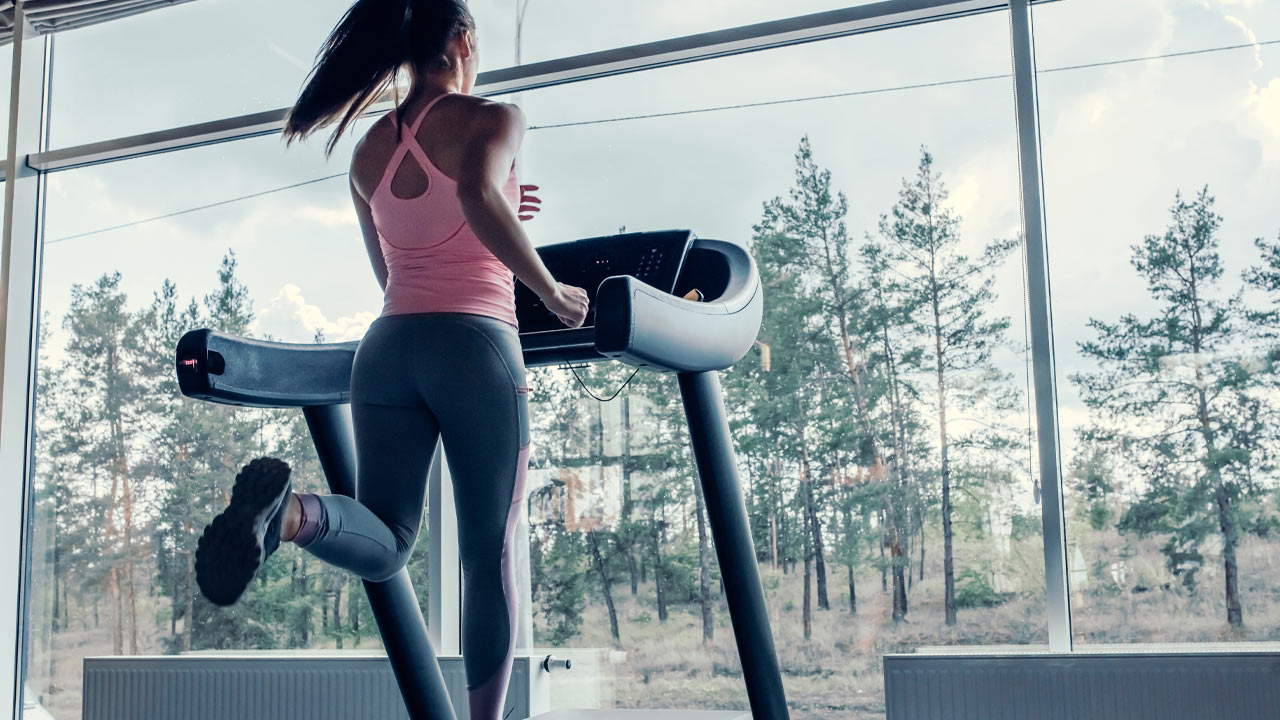Transitioning from Walking to Running for Weight Loss

Hey Angels and Alphas,
Everyone on a past, present, or future weight loss journey knows that running is an essential part of intense, fat-burning cardio workouts. But as with any new habit, whether it’s meditating every day or just drinking more water, learning to develop a love for running takes time.
It’s very uncommon for things to feel breezy and effortless the first time you lace your sneakers up. There are many factors that come into play, from your goals to the temperature or the route you’re running.
But still, there’s absolutely no denying that you have to embrace running as part of your usual routine because of its countless benefits – from easing anxiety, to burning fat, increasing energy, and helping you manage your weight.
When compared to walking, running offers a much better calorie-burn in a shorter amount of time, giving you more bang for your buck for when you’re looking for a quick workout.
So how do you pick up the pace from your leisurely walk (or even walking workout)… and turn it into a high-intensity, calorie-burning jog?
Let’s learn how with these 5 battle-tested tips for transitioning from walking to running workout routines:
#1 RUNNING FOR WEIGHT LOSS HAPPENS BY STARTING OUT SLOW
If you’re a beginner runner, never put pressure on yourself to just walk out the front door and instantly bang out a 5K.
Instead, start slowly by keeping up with your walking habit and gradually introduce a few short jogging intervals into your regular walking routine. In fact, walking for 1 minute then running for 30 seconds can be an amazing place to start since this challenges your body, boosts your heart rate significantly, and helps you build the endurance you require to run longer and longer distances.
And if you feel like 30 seconds of jogging is too much, go ahead and start with 15. It doesn’t matter where you start, what matters is where you’re getting to, so continue to increase the duration of your running intervals (and at the same time, decrease your walking intervals) as your fitness and energy levels start improving.
#2 CHOOSE THE CORRECT GEAR FOR THE TASK
Choosing the right sneaker for your runs is a challenging endeavor… and sneakers for running are way different than sneakers for walking. Some sneakers are great for walking, but then provide absolutely poor support when it comes to higher-intensity forms of physical activity such as running.
What you should do is go to the athletic shoe store and consult someone from the staff – the majority of people there are educated on the differences between types of shoes for athletic performance. They can advise you best on whether you can just keep using what you already have or if you need some totally new running shoe.
The same actually goes for the layers – always make sure you’re choosing sweat-wicking material so you’re keeping your feet dry and safe during your runs (this also helps you pick up your speed with ease and comfort.)
#3 FOCUS ON YOUR CADENCE
Make an account of the number of steps you take every minute – luckily dozens of apps on your phone can already do that for you. There are extensive studies linking cadence and injury, and they have concluded that more cadence can lead to a lower stress load on the knee and hip joints (which prevents the majority of the most common running injury.)
But you also have to remember to walk and run in a way that feels natural and comfortable. If you have a lower cadence, this means you’re likely over-striding, which can lead to injuries related to heavier heel striking. Ideally, experts suggest you should keep your cadence anywhere in the 150-180 steps per minute range.
Remember: a faster cadence doesn’t really require more effort, just a shorter stride length. Most people can instantly become quicker when they start paying attention to this.
#4 INCORPORATE SOME STRENGTH TRAINING TO BOOST WEIGHT LOSS!
Whether you realize it or not, picking up the pace while running means increasing the load and stress on your muscles and joints. Without a proper strength training routine, this can make you prone to imbalances. Take care of your muscles and joints by adding in regular strength training sessions to your regime (at least 2 a week) and focus on targeting the posterior chain or backside of your body. If you’re looking for a great place to start, think squats and deadlifts.
#5 FINALLY, SET A SMART RUNNING GOAL FOR YOUR WEIGHT LOSS
Smart goals, as we all know, stand for goals that are specific, measurable, attainable, relevant, and time-based.
All of these are crucial elements of successful weight loss. Having a goal not only boosts your motivation for the times you’re trying to push yourself, but it also helps you learn what will happen if you *don’t* achieve the things you set out to achieve.
For example, setting a goal of running 3-5 miles your first 1-2 weeks into transitioning from walking is a great place to start. It gives you a tangible, SMART goal that you can use to stick to your new training plan.
And when you start consistently reaching the distance – and you will – you can build on top of that goal based on how your body responded to the stimulus you’re putting it through.
While the experts’ general rule of thumb is to increase your distance by about 10 percent compared to the previous week, remember that progress doesn’t look the same for any two people and what truly matters is creating a SMART goal that’s genuinely enjoyable and sustainable for you.





